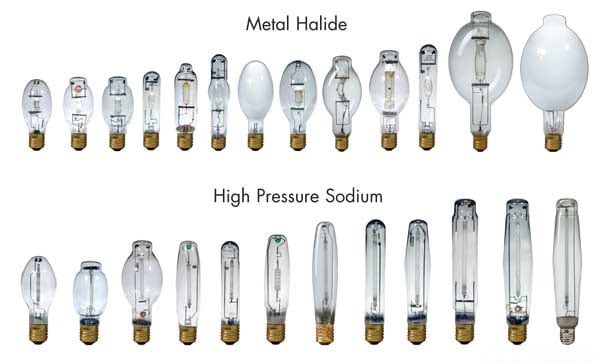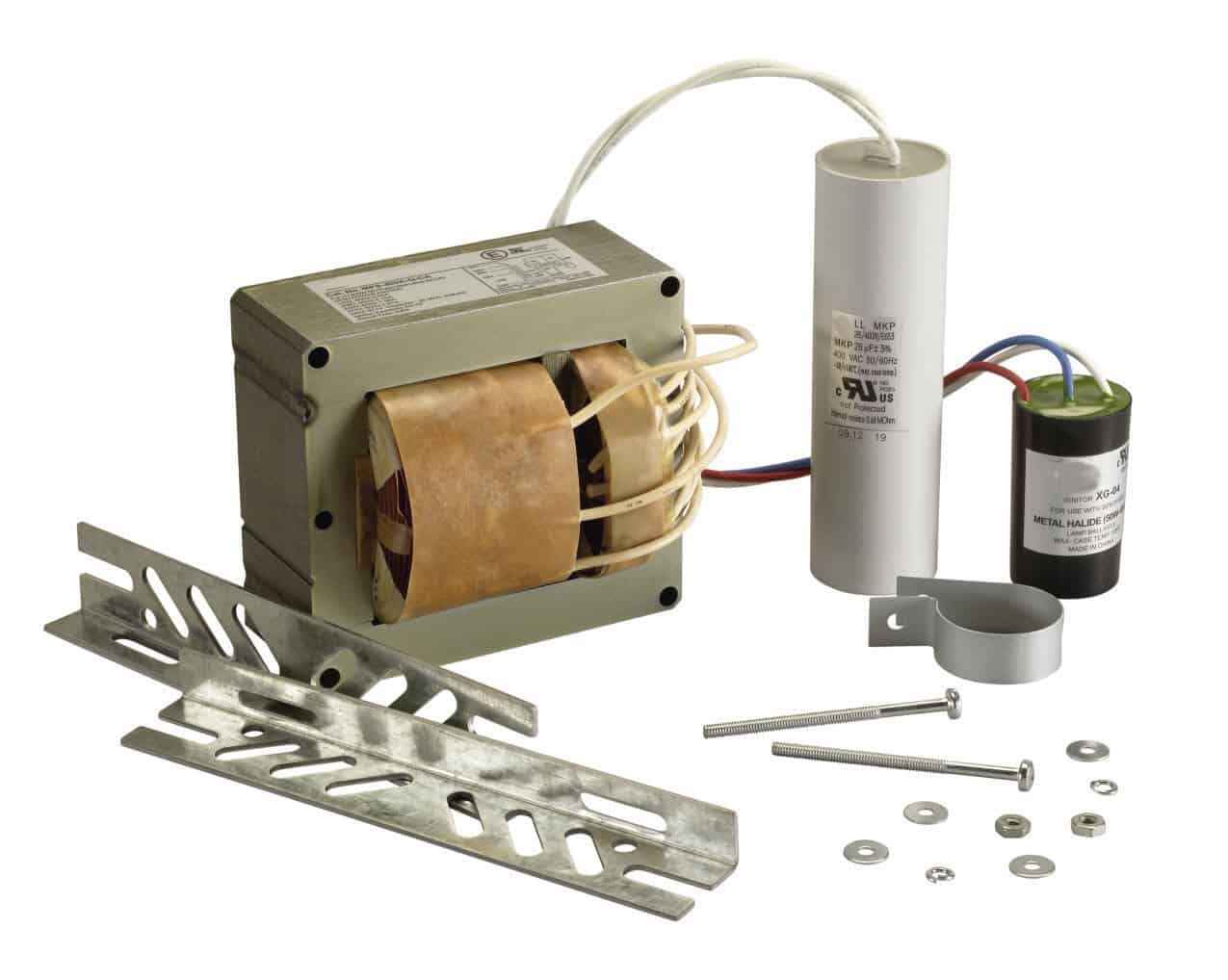ballast hid kits including Metal Halide and High Pressure Sodium Lighting ballasts. Most magnetic ballast hid are multi-tap, meaning they can be connected to several different voltages.
Mercury-vapor lamp (MV). With the lowest efficacy of any of the HID sources, most of these lamps in the 100V to 1000W ratings have an average rated life of 24,000 hrs. Because of this relatively long life, coupled with a slow reduction in lumen output, you should replace them well before reaching their average-rated life. Normal end-of-life (EOL) is a nonstart condition or very low light output caused by blackening of the arc tube from electrode deterioration.
Metal-halide lamp (MH). Operating conditions, such as lamp burning position and normal variations in supply voltage or ballast hid characteristics, can affect lamp color and light output of MH lamps. Normally, at its end-of-life, an MH lamp won’t start because the mix of materials in the arc tube changes. Therefore, the ballast can no longer sustain an arc.
High-pressure-sodium lamp (HPS). Normal end of life indication is on/off cycling, since the aging lamp requires a higher voltage for operation than the ballast can supply. This cycling sequence is normal, but not desirable, since the cycling can damage or destroy the starting circuit and/or ballast. Thus, you should check a cycling HPS fixture without delay. Other conditions that cause cycling include: a loose electrical connection, faulty internal electrical connection to the lamp or at an outdoor installation, and severe fixture vibration, causing lamp voltage to rise above operating limits.
Low-pressure-sodium (LPS). This lamp, which features high efficacy but somewhat limited applications because of its monochromatic yellow color, uses a U shaped arc tube and a two-pin bayonet base. During its burning hours, the lamp’s wattage increases. For example, at 20,000 hrs, a 180W lamp draws 247W, so any ampere reading will reflect this increase in wattage consumption because of aging. When troubleshooting, look at the lamp, ballast, capacitor, ignitor (if used), socket, and perhaps the entire fixture for indications of excessive heat.
ballast hid, capacitor and starter replacement, as well as lighting maintenance, presents the possibility of exposure to potentially
hazardous voltages and should be performed only by qualified personnel. All installation, inspection and maintenance should be
performed only with the entire circuit power to the fixture or equipment turned off.
All ballast hid, components and fixtures must be installed and operated in compliance with the National Electrical Code, requirements
of Underwriters Laboratories, Inc., and all applicable codes and regulations. This includes, but is not limited to, proper grounding of
ballast hid, components and fixtures as well as prescribed branch and total circuit protection.


